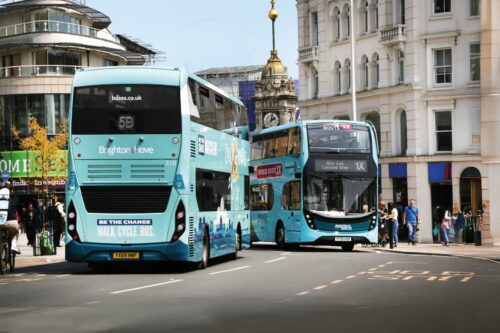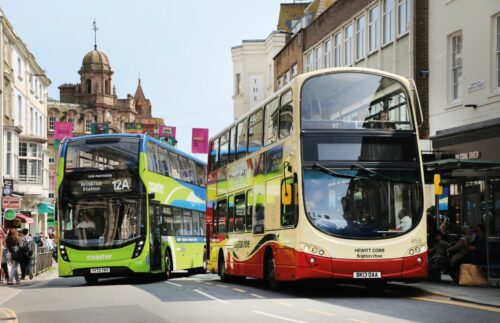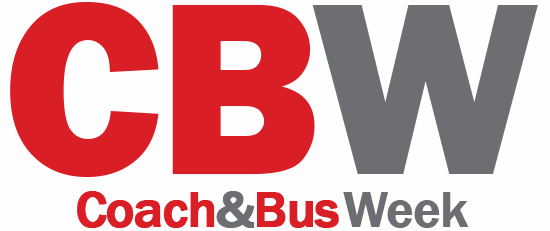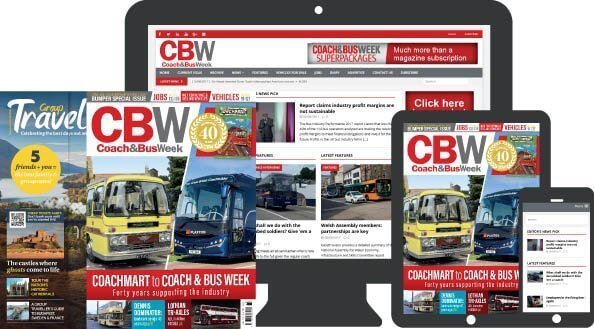
Jonathan Welch heads to the south coast of England to visit a well-known and respected local bus operator, Brighton & Hove
Across the country, there are well-known names in the industry, some of which are the names of big groups, some of smaller or local operators which have gained a reputation for being at the top of their game. One which straddles the two is the combined Brighton & Hove and Metrobus divisions of the Go-Ahead Group, which broadly speaking encompass an area to the south of London, stretching from the South Coast to the M25 and taking in areas of the South Downs and Surrey Hills. It’s a sizeable operation, with around 520 buses and coaches across its multiple divisions.
Brighton & Hove (we’ll return to look more closely at Metrobus and the Spirit of Sussex coach division later) is an operation which has attracted its fair share of attention over the years through a combination of innovation, passion and its growing collection of industry accolades, as well as its fleet of buses named after important local people. Like many urban operations, it can trace its roots back to the 1800s, with horse bus routes first recorded in the 1840s, their popularity buoyed by the arrival of a railway line from London in 1841.
By the end of the 19th century, in 1884 Brighton, Hove & Preston United was formed through the amalgamation of a number of smaller horse bus companies, becoming the forerunner of today’s modern operation. As was common at the time, a tramway network also sprang up in the city, services operated by Brighton Corporation beginning on 1901 from a new garage in Lewes Road. Two years later, Brighton, Hove & Preston United began operating its first motor buses, initially to the ire of some locals who bemoaned the noise, fumes and dirt.

Familiar names
1915 saw South Coast Motor Services take over the company’s Brighton to Worthing route, changing its name to become the well-known Southdown Motor Services at the same time, before going on to develop routes across the Sussex area, whilst at the same time Brighton, Hove & Preston United began to experience competition from the Tilling group, which had opened a garage in Hove. The following year, Tilling took over its rival, modernising the town’s fleet with new motor buses in place of horse buses. On 26 November 1935, Tilling formed a new subsidiary for its local operation, Brighton, Hove & District Omnibus Company.
As the present-day operator’s comprehensive history page of its website points out, a parallel can be drawn between the position then, when it was an arms-length subsidiary of a major group, and now, when it holds the same position within the Go-Ahead Group.
Operating initially as a private company within the Tilling group, there followed a period under the control of the British Transport Commission from 1948 as part of the then Government’s post-war nationalisation programme. The formation of the National Bus Company in 1969 ultimately brought Brighton, Hove & District as well as Southdown together under nationalised control with common local management, delivering savings through rationalisation. In a parallel with today’s Metrobus operation, Southdown’s operating area stretched as far north as Crawley, though extended much further east and west.
[…]Are you enjoying this feature? Why not subscribe to continue reading?
Subscribe for 6 issues/weeks from only £6Or login if you are already a subscriber
By subscribing you will benefit from:
• Operator & Supplier Profiles
• Face-to-Face Interviews
• Lastest News
• Test Drives and Reviews
• Legal Updates
• Route Focus
• Industry Insider Opinions
• Passenger Perspective
• Vehicle Launches
• and much more!


